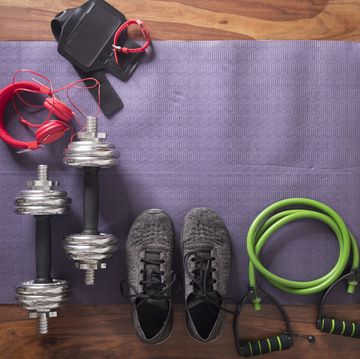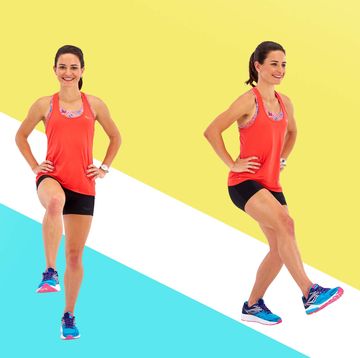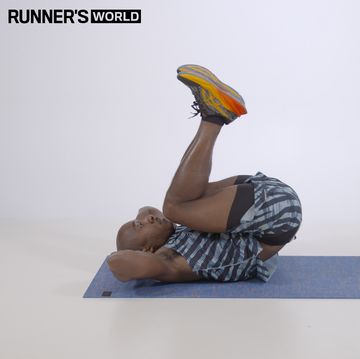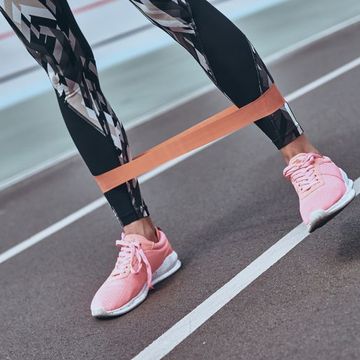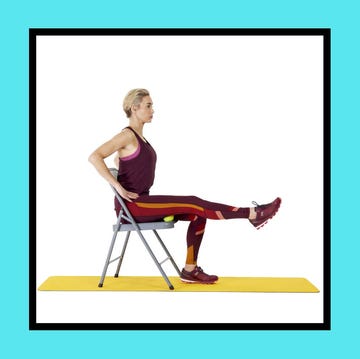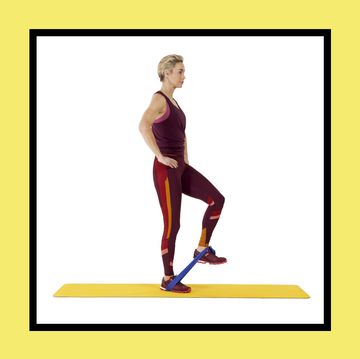Looking to build strength training into your running routine? Good idea. By strengthening your muscles and connective tissues, you'll bulletproof your body from injury – and improve your neuromuscular coordination and power, meaning you'll be able to run quicker.
The hard part is finding the time fit it in around your running workouts – and ensuring you do so tactically, so that delayed onset muscle soreness (DOMS) doesn't put paid to your running sessions.
How often should runners be strength training?
'I suggest that runners strength train twice a week, and I suggest you strength train on the same day as a run, even on a hard training run day,' says running coach Susan Paul. 'This may seem counter-intuitive, but by running and strength training on the same day, you leave yourself a recovery day or an easy run day the day after. If you alternate running and strength training – running hard one day, lifting weights the next day – there is no recovery time.'
The other benefit of running and strength training on the same day is that doubling up encourages you not to overdo it - to use a lighter weight and reduce the number of sets and repetitions because your legs are already fatigued from a run, explains Paul.
How do I know if I'm lifting too heavy?
Some amount of muscle soreness is to be expected when beginning any new workout routine, but being so sore you cannot run is definitely a sign you have been overdoing it. Gradual, progressive overload is the way to go, says Paul.
'Start by using your own body weight at first – no dumbbells – and see how that feels,' she says. 'Focus on using correct form and going through the complete range of motion intended for the exercises rather than the amount of weight used. Then, add weight gradually and/or increase the number of repetitions over time.'
When putting together a circuit of exercises, start with just a few moves – such as squats and lunges – which are great all-purpose lower body exercises. And then add in new exercises over time.
How often should runners change their strength training routine?
'Always allow yourself adaptation time for these new exercises before increasing the intensity with weight or reps, just as you would when increasing mileage,' explains Paul. 'Adaptation varies among individuals, but expect it to take three to six weeks. It may take longer, depending upon how many miles a week you are running.'
Also, make sure you keep track of the amount of weight and the number of sets and repetitions you do during each session. Increase the repetitions or the weight, but not both at the same time.
Keep in mind that running is your priority at this time, not weight training, and proceed cautiously.
Beginners bodyweight strength training routine
This workout touches on all the key running muscles and requires no equipment. If you're just starting out, try just a few exercises to begin with and add exercises as you get stronger over time.
Perform the circuit 1-3 times, depending on how hard you want to work.
Step up
Works: The quads and glutes.
How: Place your left foot onto a bench and pushup through your heel to lift yourself up, bringing your right foot through in front of you. Step back down with your right foot, concentrating on flexing the hip and knee of your left leg. Repeat on the other side.
Sets/reps: Two sets of 10-15 reps.
Lunge & backward lunge
Works: The quads and glutes.
Lunge: Stand facing forward, hands on hips. Lunge forward with your left leg and lower your body by flexing the right knee and hip until your right knee almost touches the floor. Keep your torso upright throughout. Your lead knee should point in the same direction as your foot and shouldn’t move further forward than your toes. Return to the start position. Repeat with the other leg.
Sets/reps: Two sets of 10-15 lunges.
Backward lunge: Stand with your legs shoulder-width apart. Step back with your right foot and lower into a lunge – your right knee should almost touch the ground and your left thigh should be parallel to the ground. Keep your back straight and your left knee over your toes. Return to start position and repeat on the other leg.
Sets/reps: Two sets of 10-15 lunges.
Bridge
Builds: Muscles in your glutes and lower back, to boost core strength.
How: Lie on your back, knees bent and feet flat on the floor (a). Raise your pelvis so your body forms a line from knee to shoulders. Hold for 30 secs and then lower your pelvis. To add difficulty, try doing it with one leg extended.
Sets/reps: Three 30-second holds.
Calf drop
Works: The calf muscles and Achilles tendons.
How: Stand on the edge of a step. Push up with both feet into a calf raise. Lift one leg and slowly lower your other leg so your heel drops below the step.Return to the start.
Sets/reps: 10 reps on each foot.
Ab crunch
Strengthens: Your abs and improves core stability.
How: Lie on your back with your knees bent and feet flat on the floor. Place your hands so that your fingers are by your ears. Contract your abs and curl forward to lift both shoulders off the floor without tucking your chin to your chest. Hold very briefly, then lower to the start position.
Sets/reps: Two sets of 10-12 reps.
Press-up
Works: The pectorals, shoulders and triceps; strengthens the core.
How: Lie with your weight supported on your toes and hands. Your hands should be slightly wider than shoulder-width and directly under shoulders. Keeping your body straight, without sagging the hips, bend your arms to lower your body close to the floor. Push back up until your arms are extended.
Sets/reps: Two sets of 10-12 reps.
Chair dip
Builds: The triceps and shoulders to enable good form when you’re tired.
How: Sit on the edge of a bench or chair, hands supporting your weight. Position your feet away from the bench, legs straight and heels on the floor. Lower yourself until your upper arms are parallel to the ground, then push back up.
Sets/reps: Two sets of 10-15 reps.











